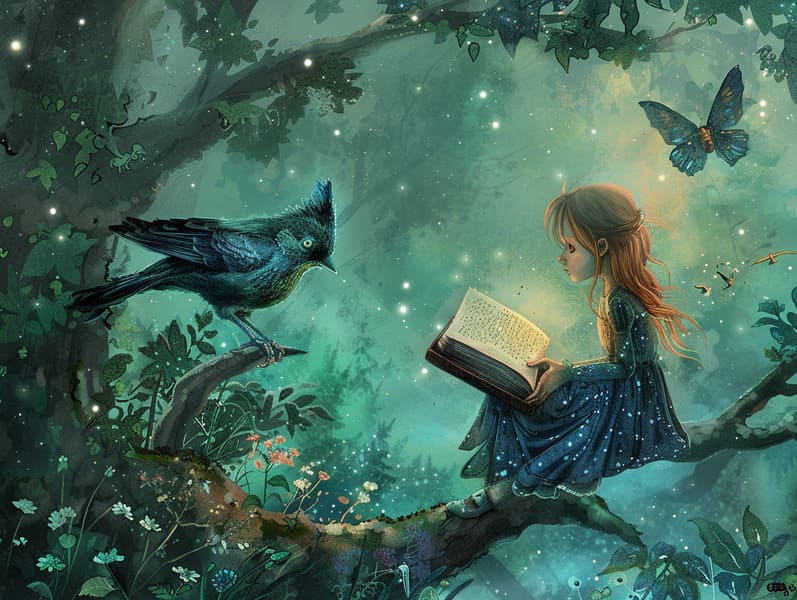Uncovering the Past of Short Fairy Tales and Its Steadfast Elegance.
Uncovering the Past of Short Fairy Tales and Its Steadfast Elegance.
Blog Article

Vintage fairy tales have historical significance. These narratives have been told from one generation to the next long before they were ever inscribed. They came from a variety of cultures, including Middle Eastern traditions. They were initially conveyed among mature audiences, often carrying themes and messages relevant to the societal norms and beliefs of the time.
The Grimm brothers, Jacob and Wilhelm (the Grimm brothers), were among the first to gather many of these beloved fairy tales. Their anthology, "Grimm's Folk Tales," included narratives like "The Story of Cinderella," "The Bread Crumb Trail," and "Snow-White and Rose-Red," which have since become staples in the world of timeless fairy tales. Similarly, the Danish author's charming narratives, such as "The Story of the Little Mermaid," and "The Duckling's Story," have floated into hearts worldwide, securing their place in the pantheon of beloved fairy tales.
Despite their age, classic fairy tales remain as pertinent as ever, especially as children's night stories. These charming stories are now available in many formats, including vividly illustrated books, enchanting animations, and web-based fairy tales.
Their unwavering allure can be ascribed to several whimsical characteristics:
Ethical Lessons: Old fairy tales often teach important moral lessons. Narratives like "The Shepherd Boy and the Wolf" teach the value of honesty, while "The Tortoise and the Hare" point out the values of determination and unassuming nature. These tales offer young readers clear distinctions between truth and falsehood, building their moral compass in a soft yet important way.
Kindness and Comprehension: Classic fairy tales frequently portray individuals facing challenges and struggles, provoking listeners to feel with their struggles and boost their triumphs. For instance, "Beauty's Beast" emphasizes the virtue of appreciating inner worth to recognize the true being of a person, cultivating tenderness and insight.
Cultural Recognition: Many traditional fairy tales are saturated in the cultural contexts from which they blossomed. Engaging with these stories can provide enlightening views into different heritages, promoting a sense of world understanding and appreciation.
Fantasy and Imagination: The extraordinary elements in ancient fairy tales—mythical entities—enliven children’s inventiveness. These fairy tales carry readers to enchanted realms, awakening imaginative thinking and a sense of marvel that endures a lifetime.
Old fairy tales are not only delightful but also teaching. They function as alluring tools in strengthening various cognitive and affective skills in children. When ancient fairy tales are narrated, they improve speaking abilities by bringing new word meanings and detailed sentence these guys structures. This practice also fosters listening skills and attentiveness, as young ones track the narrative, enthusiastic to see what happens next.
Furthermore, examining the themes and characters of old fairy tales can nurture cognitive skills and critical thinking. Kids are educated to discover patterns, expect results, and get cause and effect. These analyses also advance kids communicate their thoughts and feelings, nurturing their emotional intelligence.
In today’s information age, the availability of digital fairy tales has made these stories more acquirable than ever. Web-based platforms and mobile apps provide large libraries of popular fairy tales that can be looked at or listened on anytime, anywhere. Fairy tales voiced are particularly liked, providing an charming way for young ones to immerse in these fascinating tales. Narrated books and read-out-loud videos lead characters and settings to life, often paired with entrancing background sounds and soundtracks that boost the story journey.
The timeless allure of old fairy tales lies in their ability to evolve to modern days while continuing with their key morals. Contemporary takes of these fairy tales often spotlight more representative protagonists and modern settings, making them familiar to today’s audience. However, the core values of fearlessness, warmth, and lawfulness remain unchanged, continuing to reach listeners of all ages.
Classic fairy tales also offer a sense of security and closeness. They confer upon a methodical narrative with a definite beginning, middle, and end, often concluding with the finalization of conflicts and the triumph of morality over immorality. This consistency can be encouraging for young readers, providing a sense of unchangeability in an unstable world.
Classic fairy tales continue to enthrall and edify new generations, maintaining their grace and meaningfulness in modern society. As children's night stories, they put out a perfect blend of fantasy and learning, supporting moral values, empathy, and creativity. The existence of internet fairy tales and the sought after status of fairy tales told out loud ratify that these traditional fairy tales remain attainable to new generations.
By sustaining and telling these tales, we continue to treasure the rich tapestry of storytelling and cultural heritage. Whether you are delving into a vibrantly illustrated book, perusing a web-based library, or hearing an spoken story, the attraction of children's fairy tales is always within reach. These stories remind us of the unwavering nature of storytelling and its ability to draw us together across centuries and lands.
Even if you are experiencing a colorful picture book, experiencing a online library, or listening on an audiobook, the beauty of famous fairy tales is always within reach.
These narratives emphasize of the unceasing force of narratives and its ability to draw us together across epochs and places, casting a charm that delights and instructs alike.